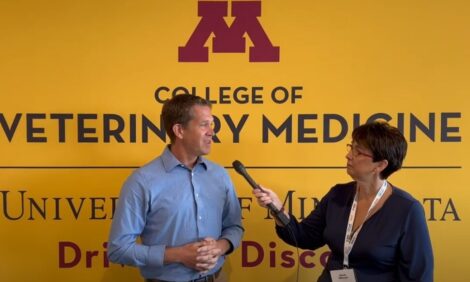



60,000 tons of pig blood could be a new source of sustainable food
University of Copenhagen researchers have pioneered a method to transform pig blood into a neutral tasting protein powder for the food industry.Every year, 60,000 tons of blood are left over from Danish pork production. For the most part, it goes to animal feed.
Using an enzyme found in the papaya fruit, researchers from the University of Copenhagen’s Department of Food Science have developed a method to extract protein from pig blood. The result is a fine, white, neutral tasting powder with a 90 percent protein content. One that can be used as a supplement in a wide variety of foods. Pig blood protein has a higher nutritional value than any other plant or dairy-based protein on the market.
"We are increasing production sustainability by taking advantage of pig blood as a protein source for human consumption. It is likely that a growing number of people will satisfy their protein needs in the future through alternative food sources, for the sake of CO2 emissions and due to food shortages," explains associate professor and head researcher Rene Lametsch.
The 60,000 tons of pig blood that flow through Danish slaughterhouses annually are primarily sold on the international market for animal feed. By using the researchers' method to use the blood as a protein source for humans, 5,000 tonnes of pure protein powder can be extracted from 60,000 tonnes of blood.
Tested in foods for older people
Protein extracted from this blood can be used for many things. A protein powder can be blended by consumers into juices, ice cream, chocolate bars, dairy drinks and more. It can also be used in hospitals and for elder care.
"We have tested the powder in a chocolate bar, as well as in meatballs served to people 65-years-old and up, with positive results. Older people can have a tough time getting enough protein in their diets as they begin to eat less at the exact same time that their bodies need additional protein," explains Rene Lametsch.
The researchers' method also separates iron from blood, which can be used for dietary supplements or as a natural food colorant
Investment needed
With both the research and processing in order, technology no longer remains an obstacle. Everything is ready. The ability to use pig blood as a protein source with the potential of reducing meat production and helping the environment now awaits an industrial investor willing to launch a product with pig blood protein in it.
"Our research is done. The next step is in the hands of the industry. We need a partner that can move this to market," says Rene Lametsch, comparing pig blood with other types of protein sources which spring up. "A bold industrial investor must be willing to test this with consumers. Protein from pig’s blood faces the same challenge as with insects. People try it, and think of it as exciting, but it takes time to get used to."
He points to China as a prime export market. Danish pork is already valued highly by the Chinese, whose food preferences and traditions differ from Europeans. Furthermore, the Chinese market has the potential to absorb all 5,000 tonnes of the Denmark’s annual pig protein production.
Facts
- 60,000 tons of pig blood are produced by Danish slaughterhouses annually, an amount that can be converted into 5,000 tons of protein powder.
- The researchers' method uses an enzyme from the papaya fruit to separate protein from pig blood.
- The protein powder is 90% protein.
- Pig blood protein has a higher nutritional value than any other plant or dairy-based protein now on the market.
- The protein is transformed into a white, neutral-tasting powder that can be used in a variety of foods.
- Iron and the red dye are also separated from pig’s blood and can be used in food supplements and as a natural colorant.
- The research project was conducted in a collaboration between Danish Crown, Toft Care and Essentia Protein solutions.






